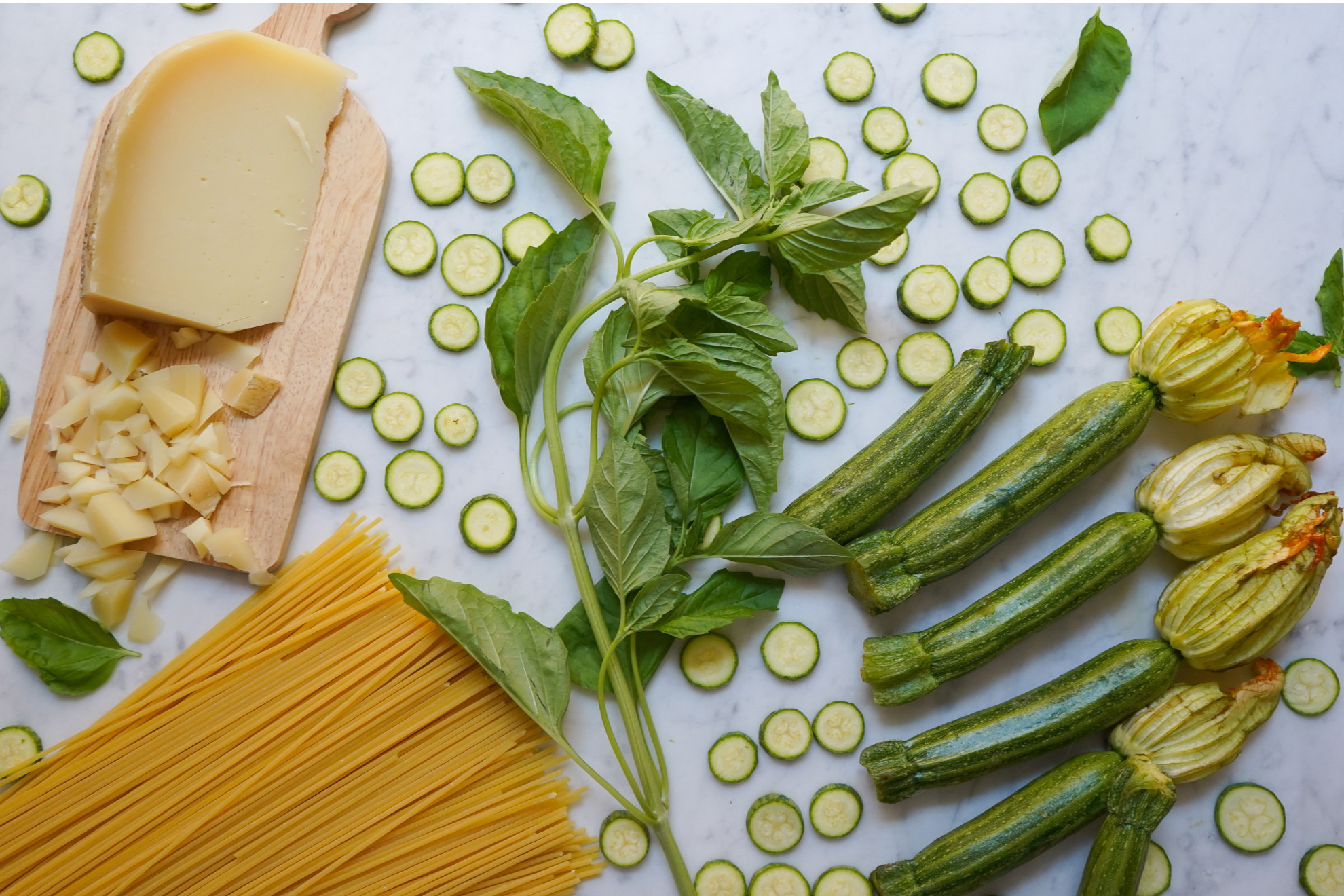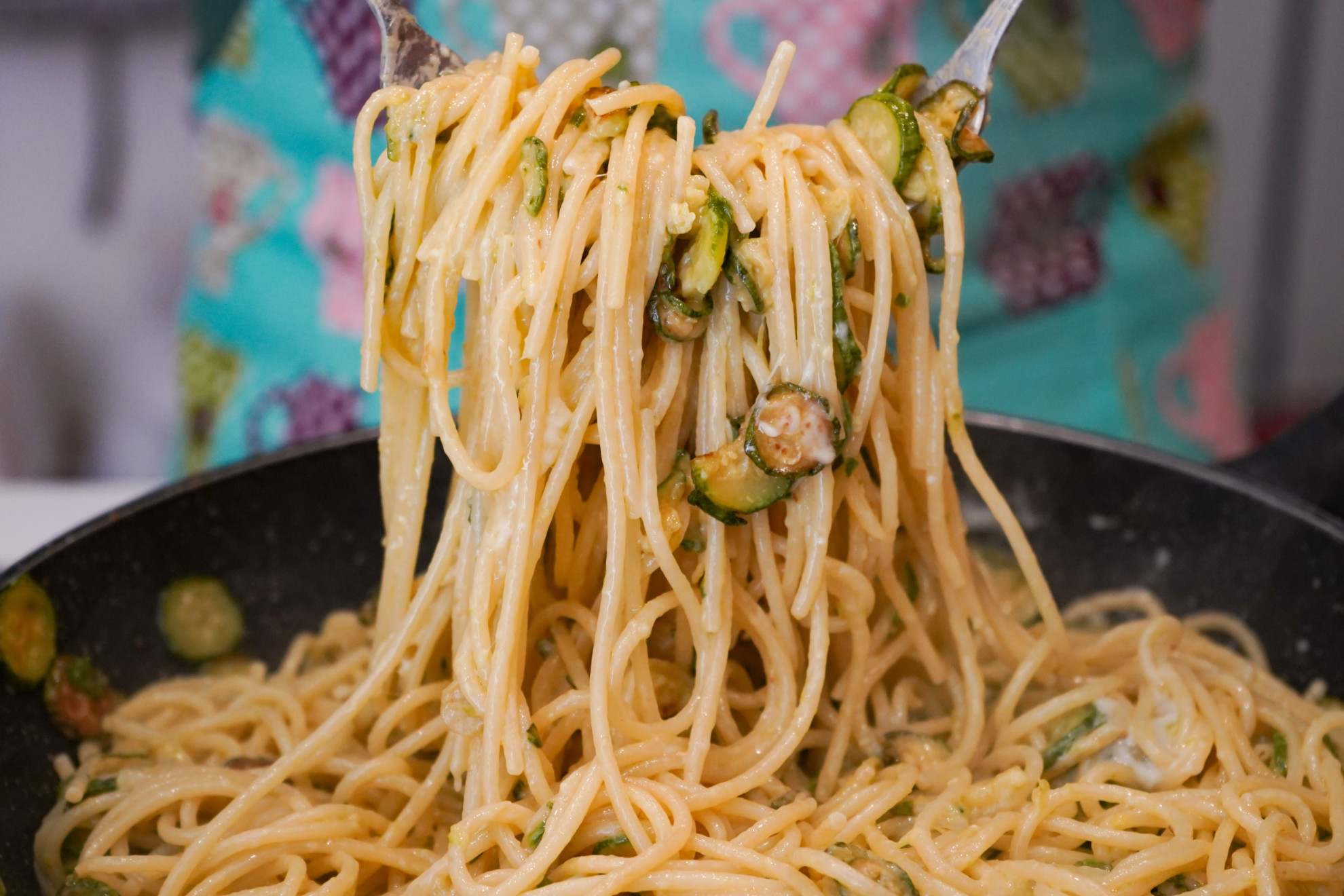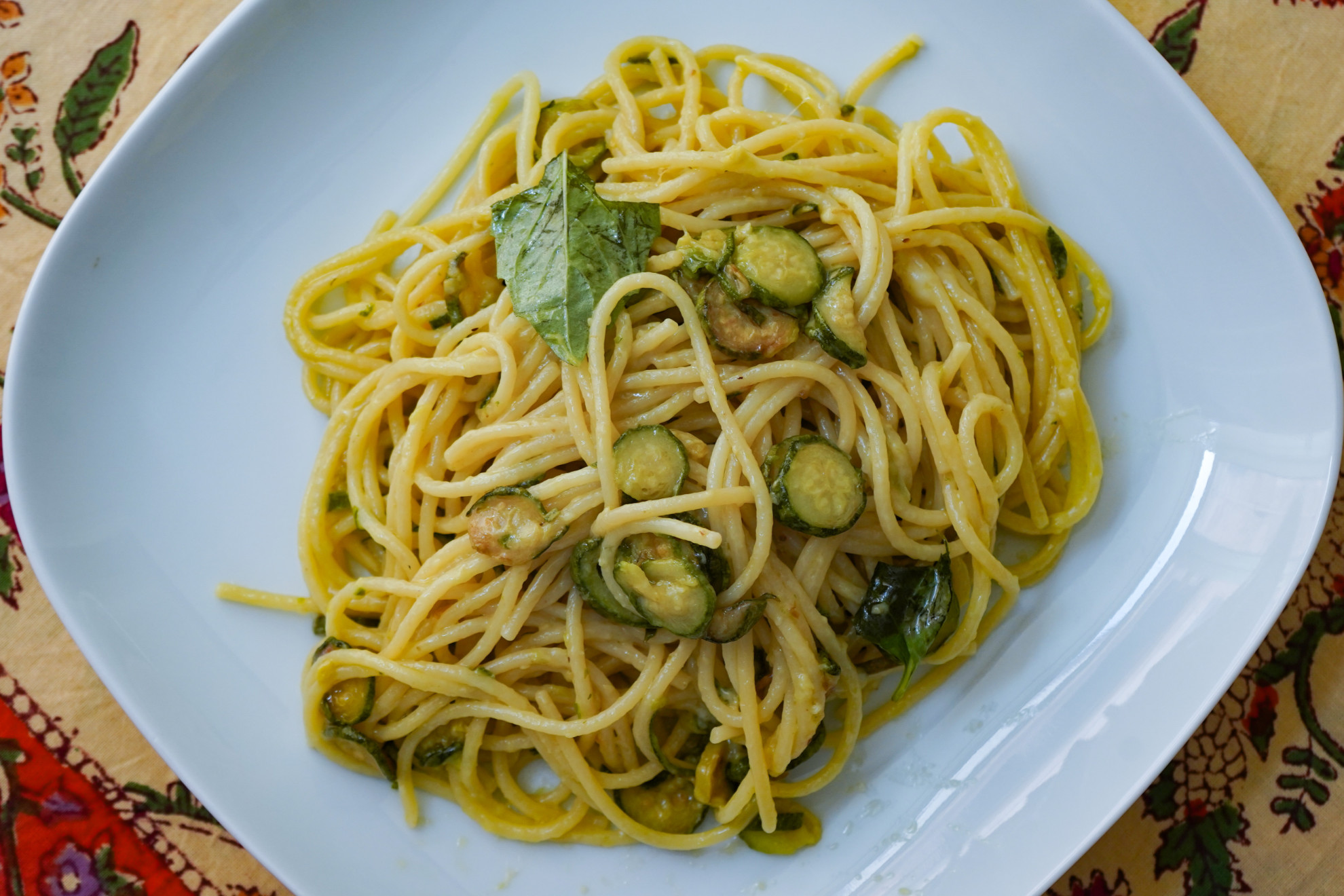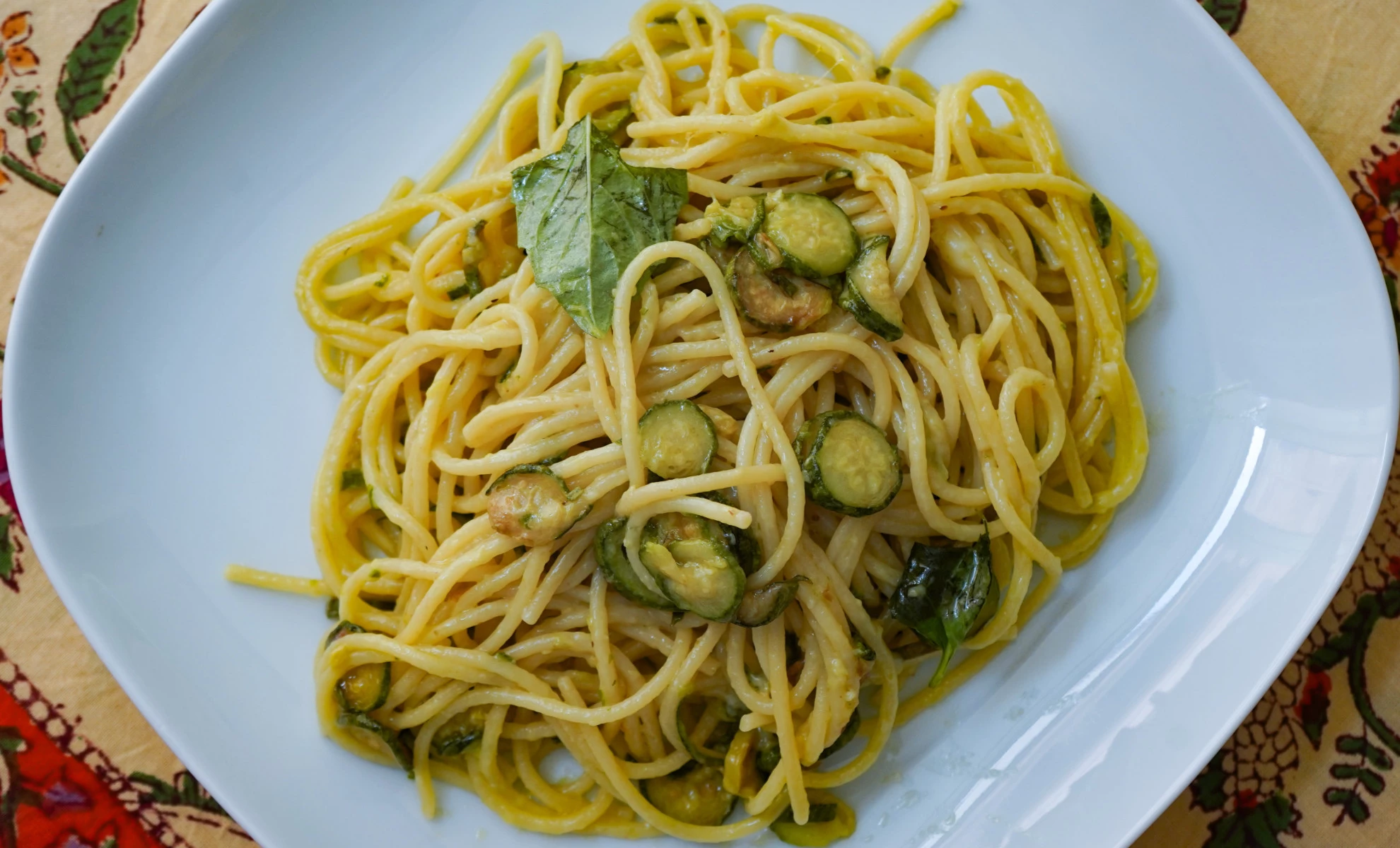Few dishes are able to absorb the identity of a place, spaghetti alla Nerano are among them. It is no coincidence that the name of the dish contains the geographical reference: the hamlet of Massa Lubrense overlooking Marina del Cantone, where the recipe was invented fifty years ago in the Maria Grazia restaurant.
Ph. Enrico Nocera - Trentaremi

How to cook pasta alla Nerano is a question that constantly returns. The courgette is the fresh element, symbol of a very lively agricultural tradition in the area. Provolone del Monaco is the DOP (Protected Origin Denomination) specialty of the Lattari Mountains, which gives it a touch of flavor and light spiciness. A slice of garlic, extra virgin olive oil, a pinch of pepper: few ingredients for a now historic dish.
«It was the 1950s when Prince Francesco Caravita of Sirignano arrived in our restaurant one afternoon, after sailing as usual with his boat between Capri and Positano. It was late, in the pantry we only had the courgettes from the family garden, a little caciocavallo and some local cheese», the owners of Maria Grazia tell us about the origin of the dish. «Oil, salt, a little pepper, basil and then you have to stir them in a pan: thus the first version of the recipe was born. Only later was Provolone del Monaco added, which we rediscovered in the 1980s».
Ph. Enrico Nocera - Trentaremi

Spaghetti alla Nerano is a quick dish, but requires a good preparation technique to prevent a sunny and tasty recipe from becoming a “mappazzone” (set of badly blended ingredients) of dubious workmanship, to quote chef Bruno Barbieri.
Courgettes must be cut thinly and uniformly and then fried in abundant extra virgin olive oil. After preparing oil and garlic in a pan, put the courgettes on it over low heat, then add the spaghetti and their cooking water. Only later, and with the flame of the stove off, is the Provolone del Monaco added. The procedure is similar to that of a carbonara, to cite an equally famous example: never add the egg with the flame of the stove still on, otherwise you will get an omelette rather than a tasty cream. Pepper and basil cut by hand, added after the dishing, give then that element of aromaticity and freshness that transforms a dish of so few ingredients into a real culinary experience.
Ph. Enrico Nocera - Trentaremi

The final result will be creamy, with the elements perfectly blended together, in an inseparable marriage between the vegetable part of the courgette and the dairy part of the provolone. A combination that explains, more than any word, the great success that this recipe has had for years now in the Sorrento Peninsula, on the Amalfi Coast and on the islands of the Gulf, starting from Capri.

